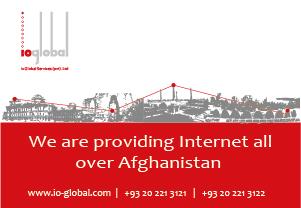After the 9/11 terrorist attacks, the United States and NATO. With eight months to the end of the US-led mission there in its current form, the fatalities of the international coalition in Afghanistan have reached 3438. The US has suffered the highest fatality rate among the coalition—2320 Americans have died.
In this long 12 year war against terror Afghans have paid an even higher price, with many thousands dead. Beyond the heavy cost in human lives, there are no exact figures of US and coalition expenditures in Afghanistan. A Harvard study estimates the cost of the US war in Afghanistan and Iraq about 6 trillion USD. Despite these staggering costs, after over a decade of US engagement in Afghanistan, the politicians of both countries have failed to define their relationship.
After the September 11th attacks, the US deployed hundreds of US troops to overthrow the Taliban regime and to capture or kill Al-Qaeda leader, Osama Bin Laden, who was responsible for the 9/11 attacks. Since then tens of thousands of American troops have been deployed to Afghanistan.
The US-led International Security Assistance Force’s (ISAF) mandate will end in December 2014, but currently around 33,500 American forces are serving in Afghanistan and between 9,000 and 12,000 American troops are expected to remain post-2014.
The key mission of US troops in Afghanistan was to close down Al-Qaeda and terrorist safe havens. But the mission has evolved from counter-terrorism to counterinsurgency (COIN) and even state building. The presence of US troops in Afghanistan after the death of Osama Bin Laden and beyond a decade was unexpected by many Afghans and Americans.
But the proxy war of Pakistan against the US in Afghanistan kept the US busy and thus prolonged the war. The US military may have miscalculated the resilience of its enemy. An enemy who is not a tiny group of terrorists, but backed by well-equipped 21st century modern military.
One of the most tangible achievements of the US in Afghanistan was establishing the 352,000-strong Afghan National Security Forces (ANSF) shows that they value and support long term Afghan-US relations.
But as a result of direct interference by the Pakistani intelligence agency—the Inter-Services Intelligence (ISI)—and their influence over President Hamid Karzai, the signing of the BSA was delayed. This was a one-man decision and clearly against the will of majority Afghans.
Osama bin Laden was believed to be a singularly severe threat to the US security, and it is true that Afghanistan was known as the safe heavens of terrorists and Al-Qaeda. But the reality was more than what Americans were being told by Pakistani lobbyists. People have heard often about Al-Qaeda and their brutal attacks; they have not heard enough about the state supporters of Al-Qaeda.
Even after killing of Osama Bin Laden in Pakistan, near Islamabad, country’s capital, the US politicians fail to acknowledge ISI’s and the Pakistani government’s deep relationship with the Al-Qaida network and other terrorist groups. Instead, they continue to regard Pakistan mainly as a victim of the war against terrorism, coddling and financing them to fight against terrorists and extremists.
Despite the deaths of thousands of Americans and coalition personnel by Pakistani-trained and financed militias and terrorists, the US government has kept silent, continuing the flow of money and aid to Pakistan, even as the bulk of this support is used to fight Americans in Afghanistan. Informed observers and experts have consistently warned that ISI is the main cause of insecurity and instability in the region, but this fact has been entirely ignored by the US government. Even Pakistani former senior diplomats and politicians have acknowledged that Pakistan backs terrorism, but you won’t hear it in DC.
Meanwhile, ISI succeeded in their in their strategic goal to create a poisonous environment between the US and the Afghan government. The Afghan government has also failed to build and define a long-term relationship with the United States. Unstable leadership and division among senior Afghan politicians over the interest of Pakistan, Iran, India and Russia in Afghanistan have resulted in a shaky Afghan foreign policy.
President Karzai is highly influenced by ISI stooges in the palace. One of the major reasons for the delay of the BSA is indirect pressure of Pakistan on President Karzai. It would be wise for the US to directly address the real source of the conflict, which has created the gap between it and its Afghan partners, and to secure the investment made in Afghanistan.
Millions of Afghan are living in an uncertain situation; their enemies and friends are not defined or distinguished. Irresponsible statements by President Karzai against the US government and the unstable position of the US government on the BSA have further confused Afghans. Millions of American taxpayers, who pay the bills of wrong politics, are either not informed by their government and media…or maybe they don’t care? Afghans know that they are held hostage by a tiny group of traitor politicians, but they are not free enough to stand against corrupt and stooge leaders.
The next Afghan president must consider this key issue and make it a priority to define a long-term relationship with the US During and after elections the only message heard in Afghanistan from US politicians has been about the BSA. The majority of US politicians talk about the Afghan elections only in the context of signing the BSA. Of course, the BSA is vital for both countries, but security agreements alone cannot build long-lasting relationships. Rather, defining shared goals and mutual interests can strengthen relations. This idea seems to have been forgotten by Afghan and US leadership.
The Afghan-US relationship should not be only based on dying and killing for each other, but it should be based on social, economic and political interests as well. Numerous opportunities already exist to build that long-term and stable relationship.
At the moment, some Afghans see the presence of the US in Afghanistan as a world policing and a force against Al-Qaeda and Taliban. What if there are no more Taliban and war in Afghanistan? How will the US and Afghan government justify their relations? Should this relationship remain merely a donor-recipient exchange, a relationship only to finance, train and advise Afghan National Security Forces?
These questions are urgent. The two countries must, through inclusive dialogue, define their relationship, and must reach for a vision beyond a militarized association.
Mohammad Shafiq Hamdam is a senior research fellow at Civil Vision International (CVI) and chairman of the Afghan Anti-Corruption Network (AACN). Follow him on Twitter @shafiqhamdam









GET IN TOUCH
NEWSLETTER
SUGGEST A STORY
PAJHWOK MOBILE APP